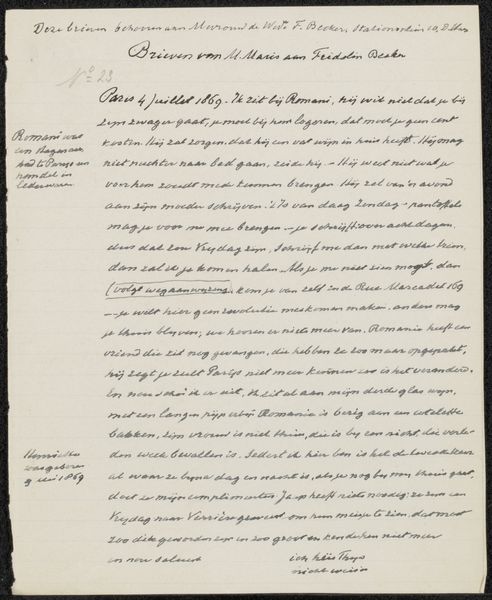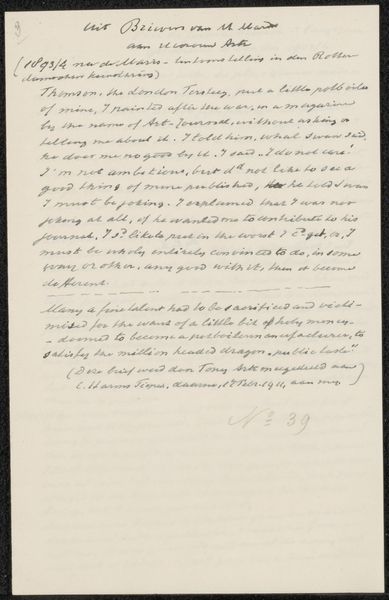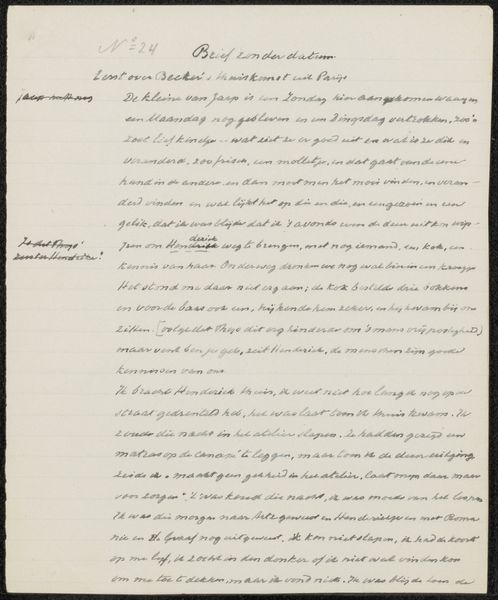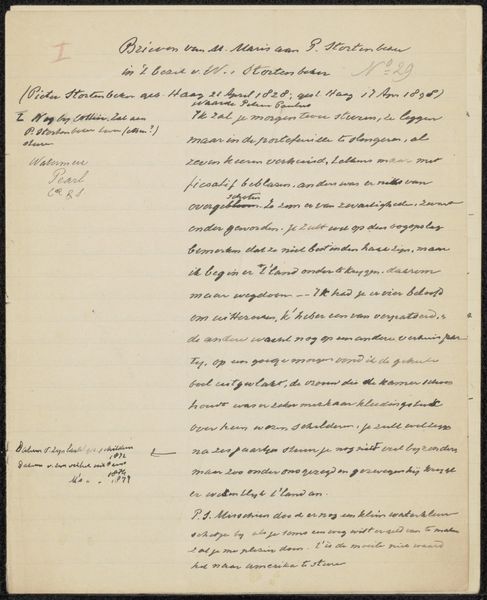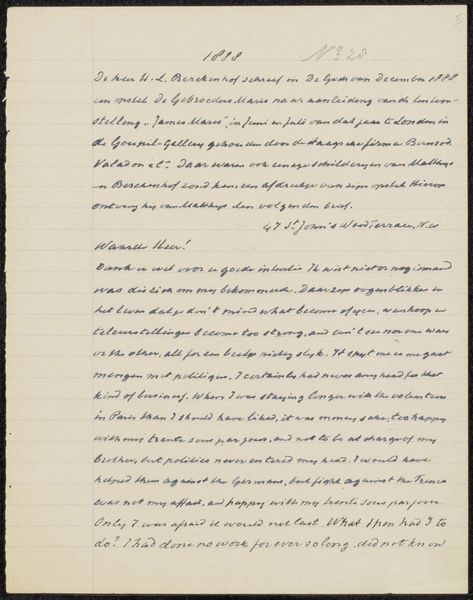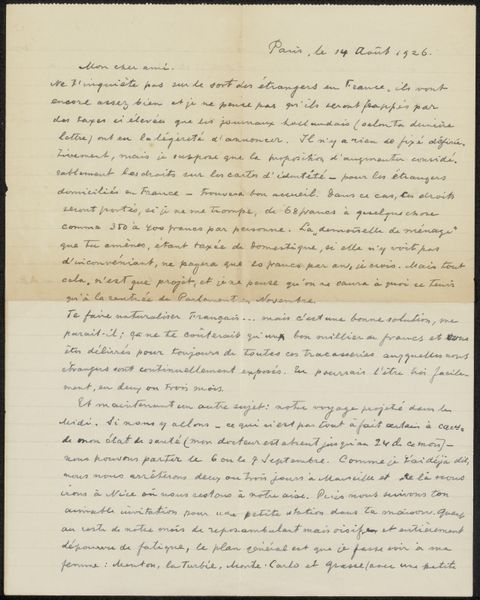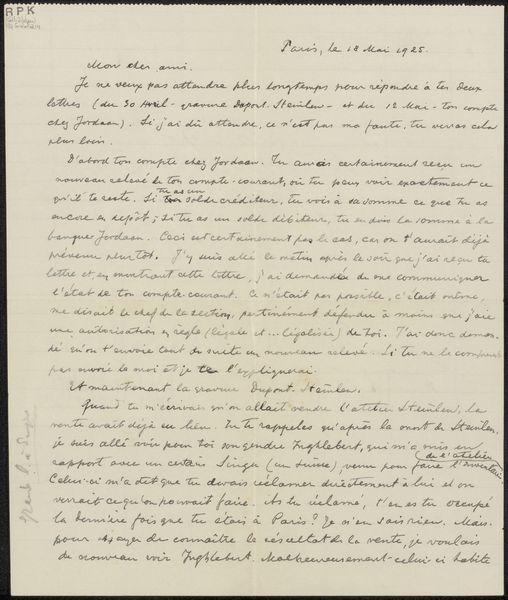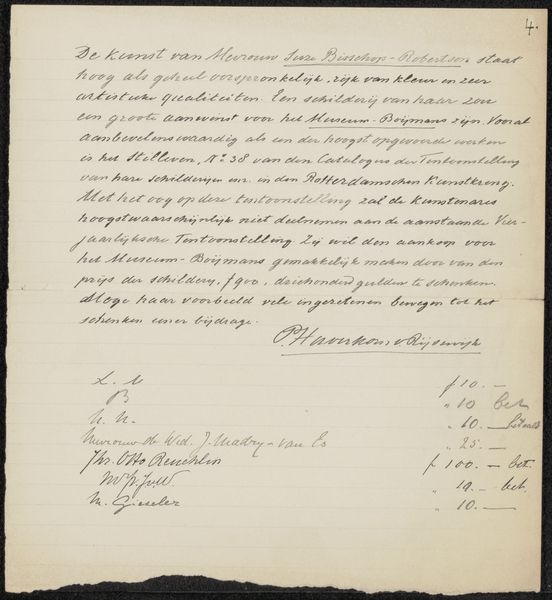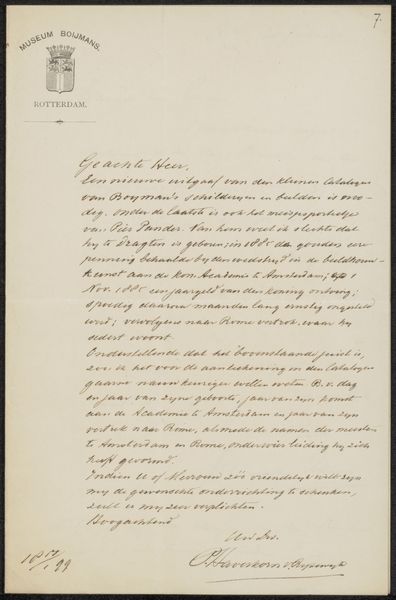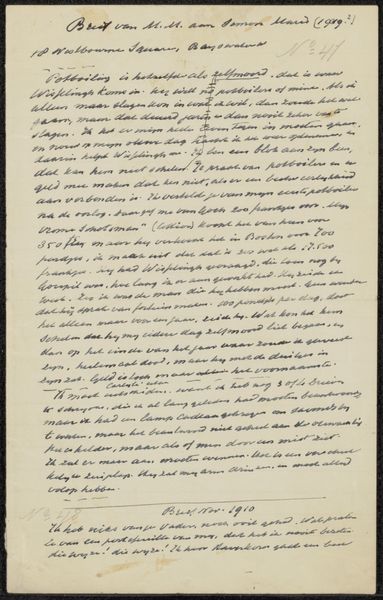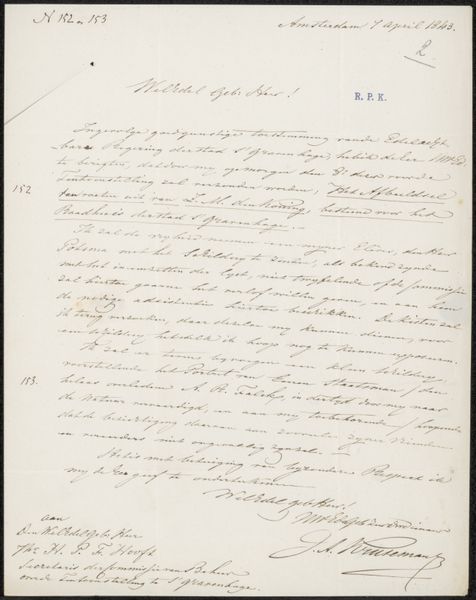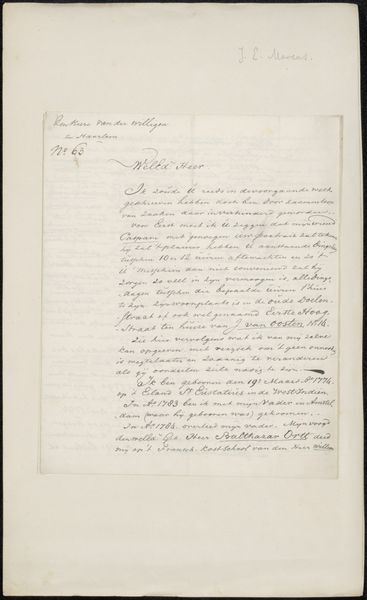
Geannoteerde transcriptie van (een deel van) een brief aan Fridolin Becker 1849 - 1915
0:00
0:00
drawing, paper, ink
#
drawing
#
paper
#
ink
Copyright: Rijks Museum: Open Domain
Curator: Here we have "Annotated transcription of (part of) a letter to Fridolin Becker" by Pieter Haverkorn van Rijsewijk, created sometime between 1849 and 1915. It’s ink on paper, a small but dense artifact. Editor: My first thought? It's incredibly intimate. The handwriting gives it a personal, almost vulnerable feeling. It makes me wonder what relationship Rijsewijk had with Becker to be saving this particular fragment. Curator: Indeed. Let’s consider Rijsewijk's broader artistic practice. As a trained draughtsman, the act of transcribing and annotating becomes an exercise in precision, a sort of physical engagement with the text’s materiality and with its historical reception. What kind of labor do we read between the lines? Editor: Absolutely. I find myself focusing on the layers of social connection embedded in this document. The mentions of Van Gogh, "a little time," and the financial considerations of the writer speak to anxieties that would resonate broadly, in and beyond artistic circles. It invites us to consider what these historical dynamics were, and what their implications were then as they continue to be in a very changed time and set of circumstances. Curator: Fascinating how the cost of daily necessities sneaks into the narrative! It redirects our gaze from idealized notions of artistic genius towards everyday life in a pre-digital society, offering clues on consumption, economic challenges, and social networks within that time. This simple annotation illuminates that struggle to survive for some artists. Editor: Precisely. This piece urges us to unpack those complex entanglements of class, circumstance, and artistic identity in the letter writer’s life. These considerations about life, rest, familial troubles—these weren't incidental features in this drawing. They reflect the reality of its material existence within larger cultural processes. Curator: Thinking about it this way, it brings a heightened understanding and richness. Thank you! Editor: Agreed! The way a simple document can spark conversation and raise questions of such broad historical significance never fails to be astonishing.
Comments
No comments
Be the first to comment and join the conversation on the ultimate creative platform.
